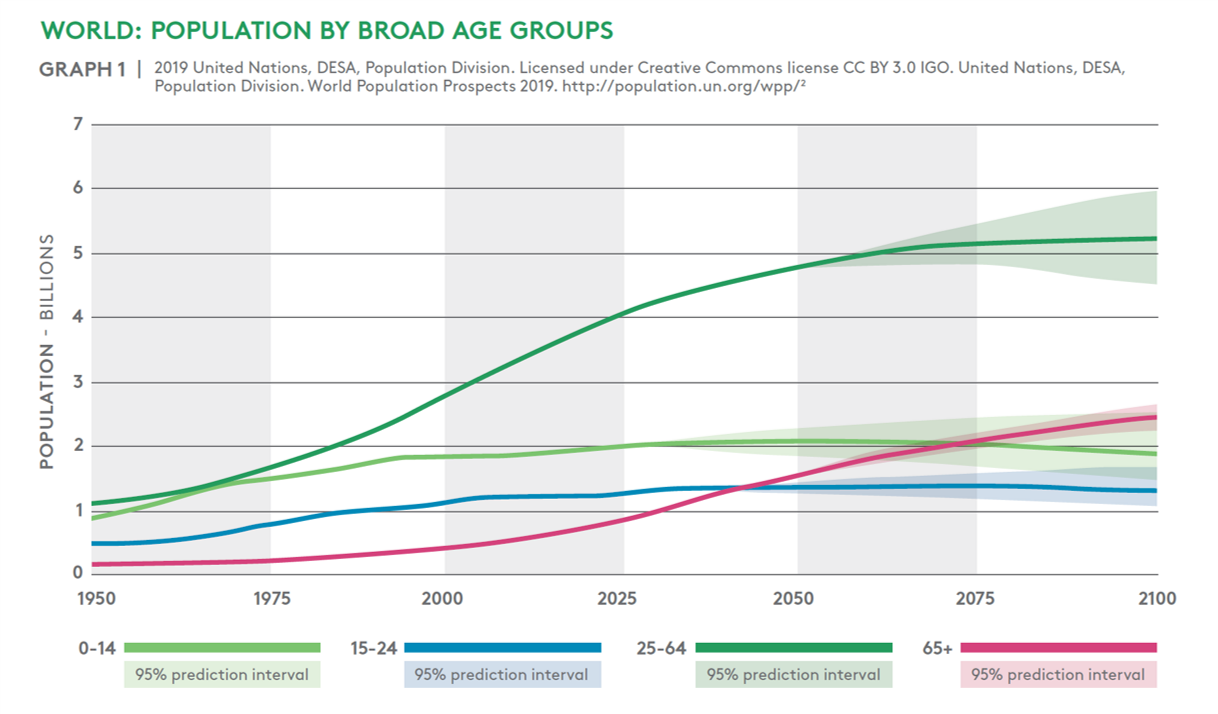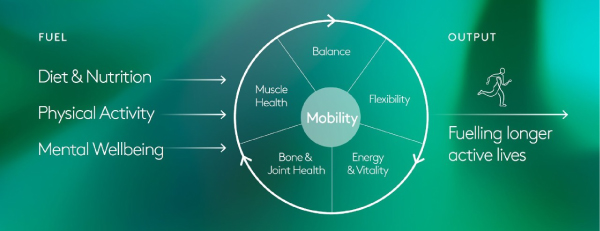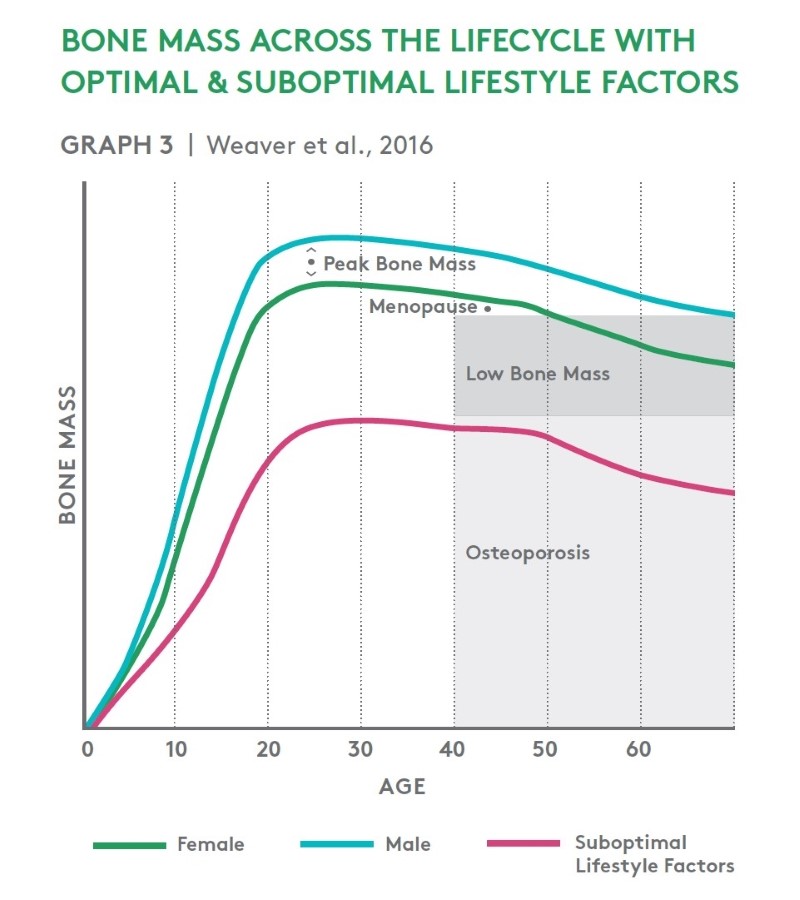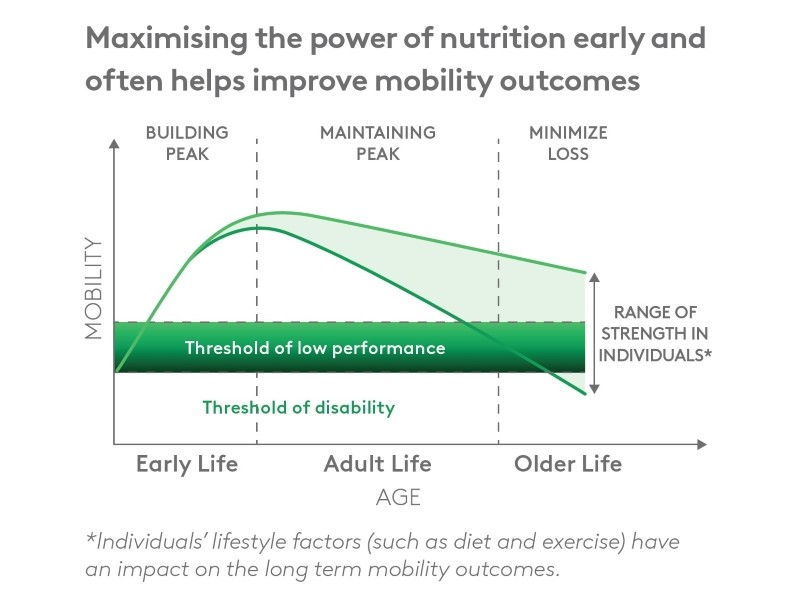Dairy Nutrition Fuels Mobility at Every Age
An optimal diet for lifelong mobility is high in protein, rich in calcium, and incorporates both Vitamin D and B Vitamins to support bone, joint and muscle health as well as energy production.
Dairy is an effective source of mobility-supporting ingredients, rich in high-quality protein, calcium, phosphorus and vitamins, which all play an important role in healthy, active ageing.
Protein
Dairy protein is known to contribute to the growth and maintenance of muscle mass, through the combination of high bioavailability and high levels of essential amino acids (especially branched chain amino acids) which stimulates new muscle formation. In addition to its muscle health benefits, dairy protein provides the amino acids needed for collagen synthesis which supports joint health. Adequate protein intake has been shown to be positively associated with bone mineral density and improved bone resilience. Some dairy proteins such as MPC (milk protein concentrate) or calcium caseinate can be suitable ingredients because they are a source of both protein and mineral (calcium and phosphorus) components.
It is also important to note that consumers widely recognise protein as a hero nutrient with 56 per cent of people choosing to consume protein for the purpose of supporting healthy ageing9.
Calcium
For strong bones, there is no ingredient more widely recognised than calcium.
76 percent of consumers surveyed believe calcium has benefits on bone and joint health10.
It’s one of the main bone-forming minerals, and the body stores 99 per cent of its calcium in bone. When calcium intake is inadequate, one might experience a loss in bone mass as the body tries to maintain calcium levels to support vital functions. It has been shown that adequate dietary calcium intake maximises peak bone mass early in life and prevents bone loss later in life11. Milk products specifically are widely known for being a good source of calcium, essential for bone development and maintenance.
Vitamins
Vitamin D is critical to maintaining healthy bones and contributes to normal muscle function. In addition, this vitamin also plays a role in the absorption and utilisation of calcium by the body.
Bones are in a constant state of remodelling, and low levels of vitamin D can result in progressive bone mineral loss over time.
When there is adequate vitamin D, up to 40 per cent of dietary calcium is absorbed by the gut compared to only 10-15 per cent at insufficient levels12.
Vitamin C is also part of the joint health puzzle, working closely with amino acids (proteins’ building blocks) for collagen synthesis which is an essential component of connective tissues for healthy joints. New evidence has also highlighted Vitamin C’s potential to increase bone healing after fractures and increase collagen synthesis which is important as collagen fibres are also a key component of the bone structure13.
For energy and vitality, the body turns to a variety of B vitamins, which help turn the food we eat into cellular energy.
In particular, B vitamins are essential for the functioning of mitochondria which are the energy powerhousesof our cells.
A deficiency in just one B vitamin can cause a disruption to the biochemical process of converting nutrients into energy in our cells. Milk and dairy products provide a good dietary source of water-soluble B vitamins, particularly vitamins B2 (riboflavin), B5 (pantothenic acid), and B12 (cobalamin).
Consumers also recognise the importance of B Vitamins for energy with 33% of those surveyed stating they actively choose products with Vitamin B ingredients for energy purposes14.
Healthy Ageing Opportunities in Improving Lifelong Mobility
The impact of reduced mobility as we age is clear to consumers, and whilst most of the impact may not be fully felt until later in life, consumers across all adult age groups (16+) are waking up to mobility as a key health concern. As a result, we see a growing trend towards a more proactive approach to life-long health, built on long-term lifestyle choices that will improve mobility outcomes and maintain longer active lives.
There is a clear unresolved need for products formulated to address wider mobility concerns in the ageing population. When asked if they found the claim "aids with reduced mobility” in food and beverages appealing consumers in the United States, United Kingdom and China agreed at rates of 47%, 51% and 38% respectively15.
The opportunity for dairy is clear. We know that consumers recognise the connection between dairy ingredients and multiple mobility factors and claims.
We also know that the main attribute consumers pay attention to when making purchasing decisions for health products is the ingredient list, over and above front of pack claims16.
As a result, we think dairy ingredients have a key role to play as an established source of nutrients that support mobility components, such as protein for muscle strength, calcium for bone health and vitamins for energy.
As brands around the world set out to address the challenges of the ageing population, they should be seeking research-backed, holistic solutions that will help consumers take control of their mobility from young adulthood and maintain this as they age. It is clear that mobility is not just a senior population concern, and that like many healthy ageing factors, true success comes from early attention and lifelong habits.








